南湖新闻网讯(通讯员 李思韬)7月29日,我校园艺林学学院风景园林系城市生态健康诊断与蓝绿空间效能优化创新团队在城市空间通风效能识别与形态管控方面取得进展,研究成果以“A Comprehensive Morphological Classification Scheme for Local Ventilation Performance Zones in Spatially Heterogeneous Urban Areas”为题在工程领域国际学术期刊Developments in the Built Environment上发表。
通过城市空间形态管控提升城市内部的通透性和空气流动性,是当前国土空间规划设计领域应对城市高温、缓解热岛效应的重要议题。然而,在空间高度异质的城市建成环境中,多元化的城市空间形态组合对局地通风环境存在复杂的协同和权衡作用,导致规划设计师在局地通风环境优化与相应的空间形态调控过程中难以做出快速响应。因而,如何将不同层面空间构成要素的形态特征进行综合集成,为城市局地通风效能识别与规划管控提供一个基础性的形态框架亟待系统整合。
针对以上问题,研究团队借鉴类型形态学方法(Typo-Morphological Approach),通过整合城市建筑群、街道网络两类“一实一虚”空间形态特征对局部气流组织的影响规律,创新性地提出从“透风(wind permeability, WP)、造风(wind reinforcing, WR)、导风(wind accessibility, WA)”三个层面以直观理解城市空间形态特征因子对局部通风效能的综合作用过程,构建了一套基于空间形态特征分类的局部通风效能区(local ventilation performance zone,LVPZ)分类框架(图1)及其指标评价体系(表1)。
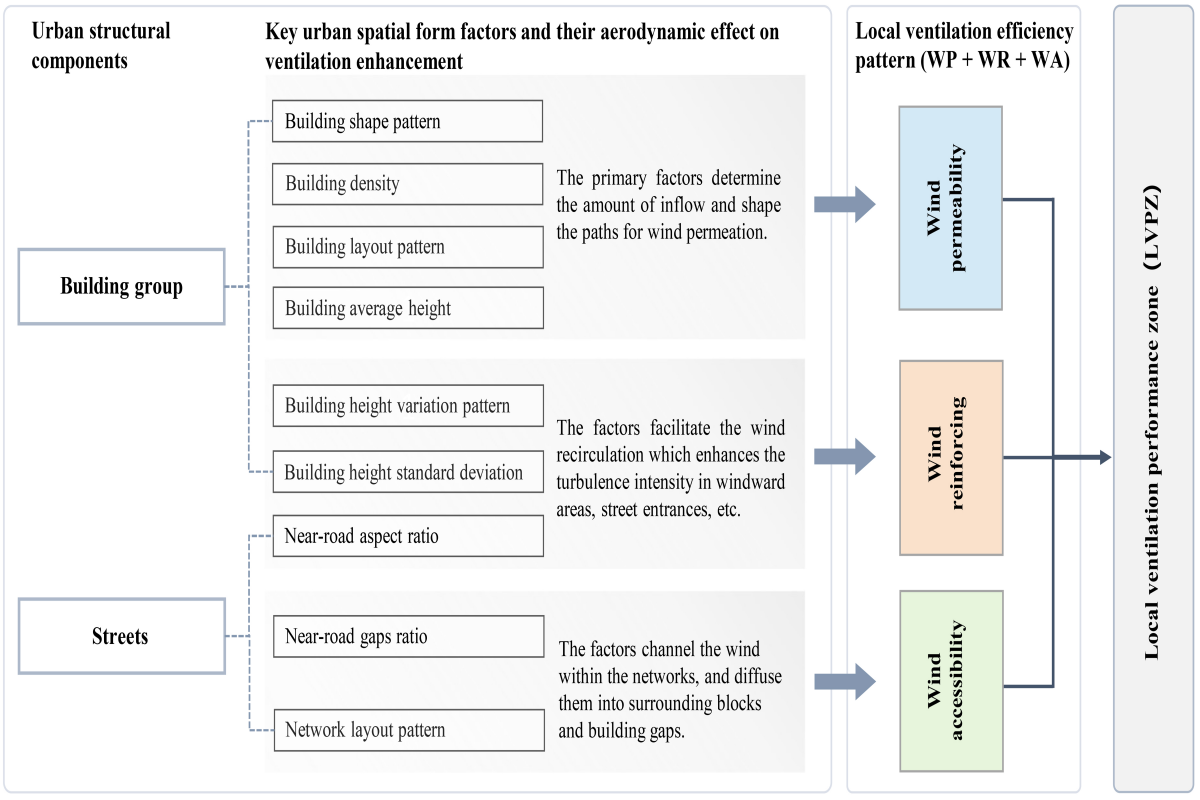
图1基于局部透风、造风、导风效能的LVPZ空间形态特征综合分类框架
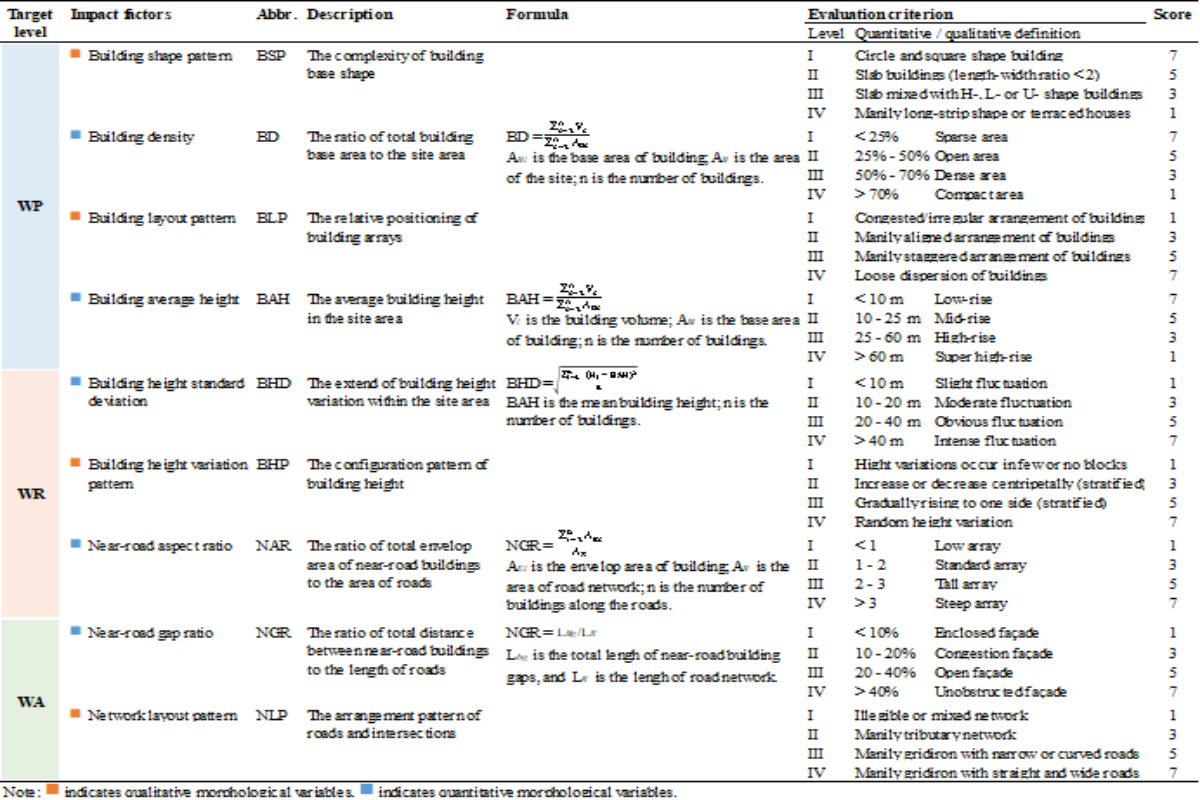
表1 LVPZ分类指标评价体系
同时,研究团队综合国土空间规划单元管控与局地气候评估尺度,制定了LVPZ地理空间单元的划分标准(图2),并通过对我国代表性城市空间形态进行识别,提炼总结了18种典型LVPZ类型(表2)。最后,结合LVPZ分类体系提出了耦合宏观、局部、微观不同尺度的基于城市通风效能优化的设计技术框架(图3)。
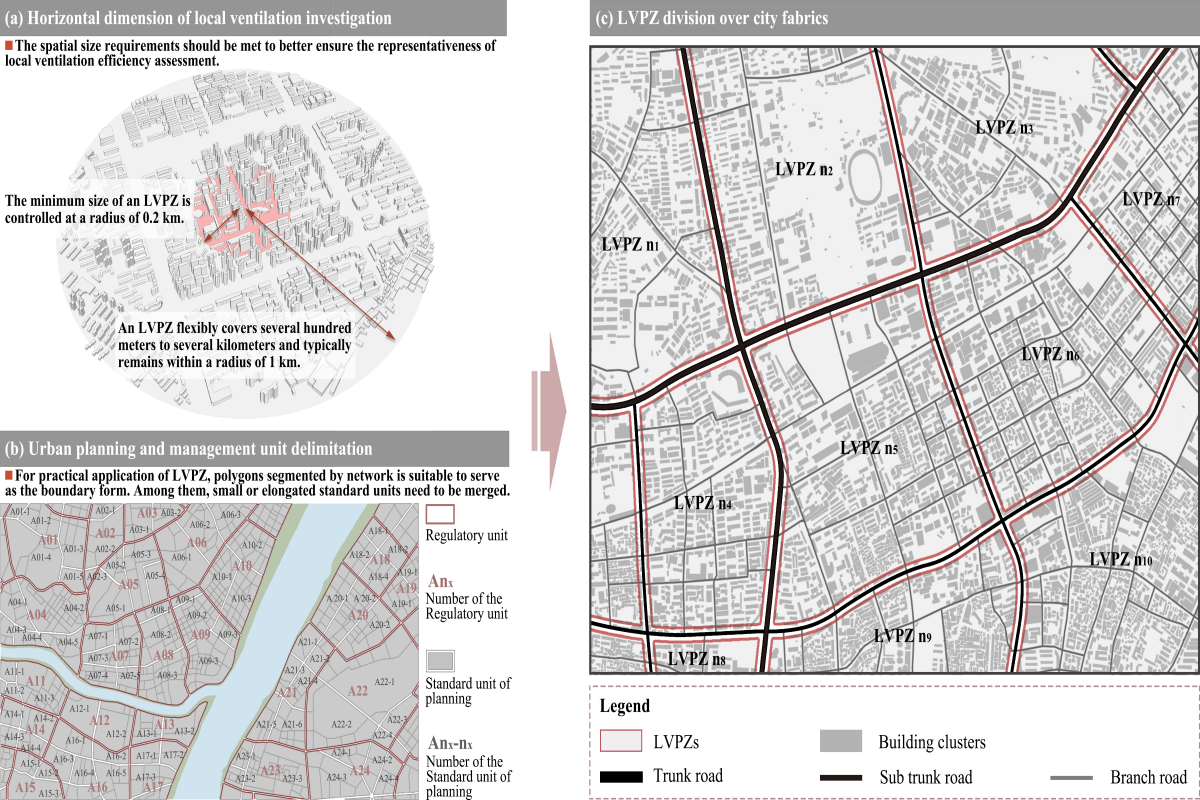
图2 LVPZ地理空间单元的(a)水平空间维度;(b)单元边界形式;(c)空间划分肌理
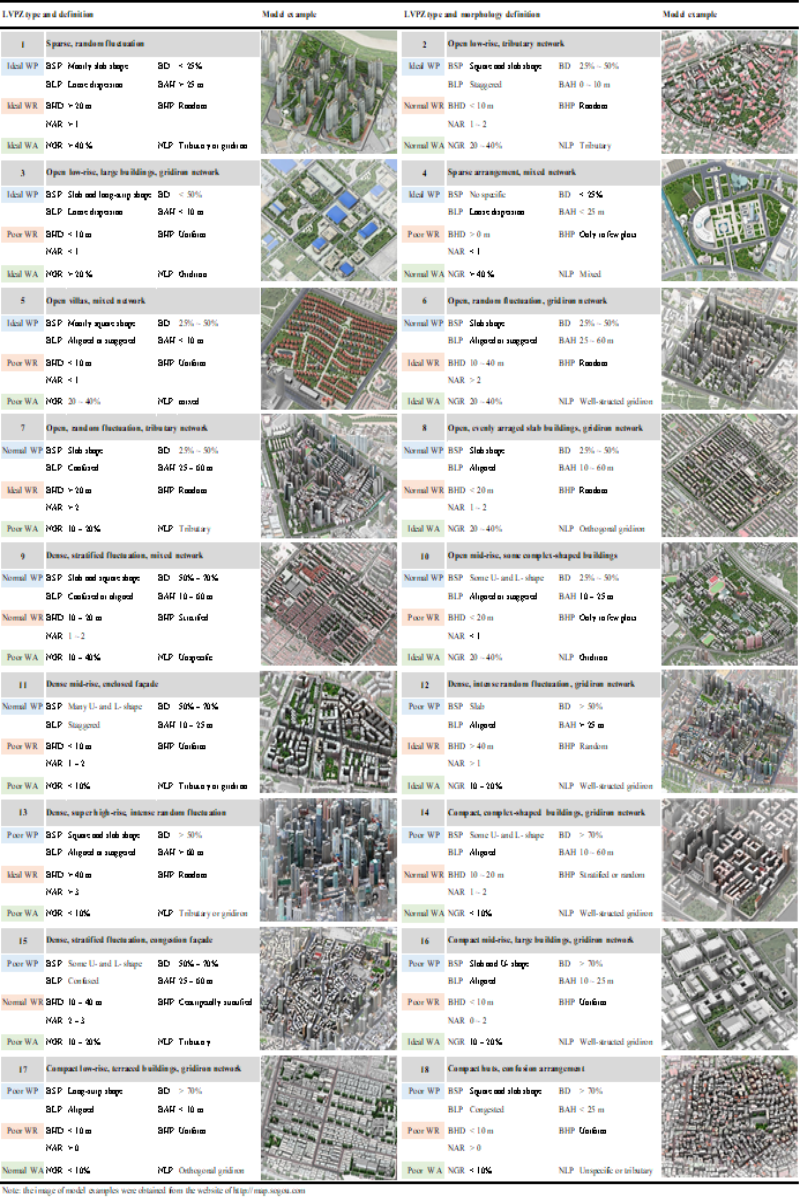
表2 适用于空间异质化城市的18种典型LVPZ类型
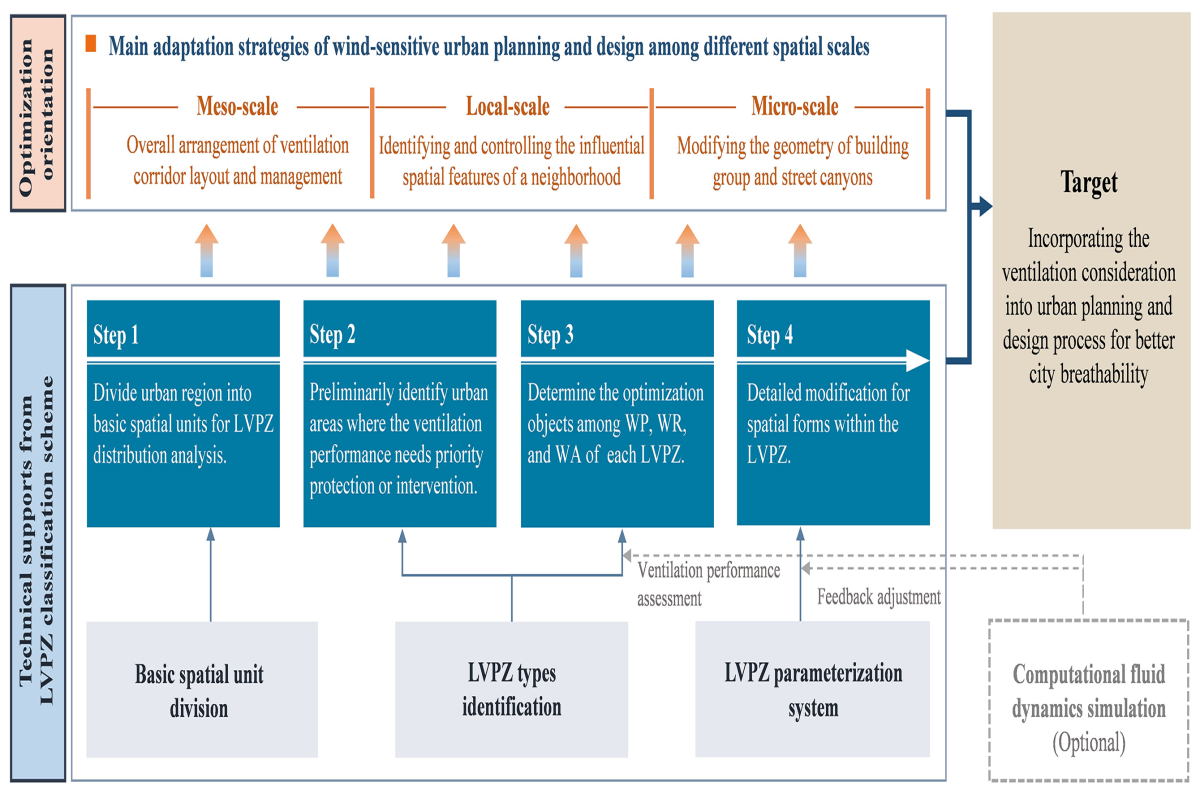
图3 LVPZ分类系统在多尺度风敏性城市规划与设计过程的应用
我校园艺林学学院风景园林系博士研究生李思韬为论文第一作者,吴昌广副教授为通讯作者。该研究得到了国家自然科学基金、中央高校基本科研业务费及武汉市园林和林业局科技计划的支持。园艺林学学院吴雪飞教授和滕明君副教授为共同作者。湖北省规划设计研究总院、湖北省空间规划研究院、武汉市公共气象服务中心等单位参与了该研究。
英文摘要: Modifying urban-built structures is a promising strategy for ventilation enhancement when designing sustainable communities. However, incorporating ventilation considerations into planning processes can be challenging because of tradeoffs and synergy among effects of various urban forms on local ventilation efficiency. This study aims to comprehensively integrate morphological parameters from aerodynamic perspective to distinguish local ventilation efficiency within heterogeneous urban areas. By synthesizing influences of spatial factors on airflow,“wind permeability, wind reinforcing, and wind accessibility” were resolved to form the local ventilation performance zone (LVPZ) characterization framework and its parameterization system. Accordingly, a spatial division standard and typical types of LVPZ classification scheme were developed. With an LVPZ-map generated in Wuhan, stable wind speed sequences were observed and their ventilation performance differences were interpreted among LVPZs using wind monitoring and CFD simulation. This scheme helps planners to evaluate local ventilation performance and provide a decision support tool for wind-sensitive urban development.
论文链接:https://www.sciencedirect.com/science/article/pii/S2666165923000844
审核人:吴昌广